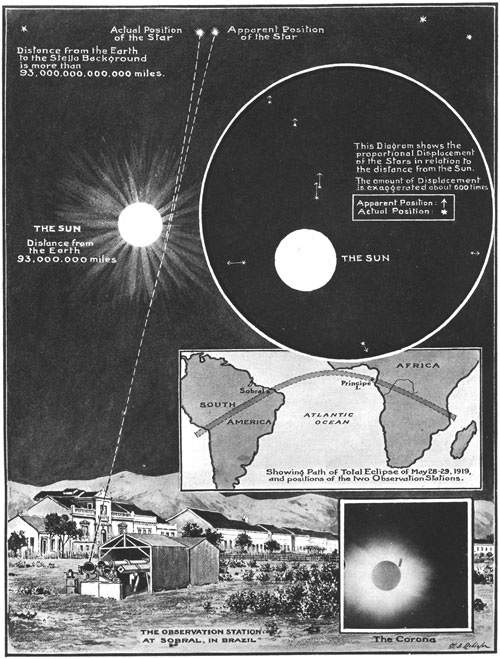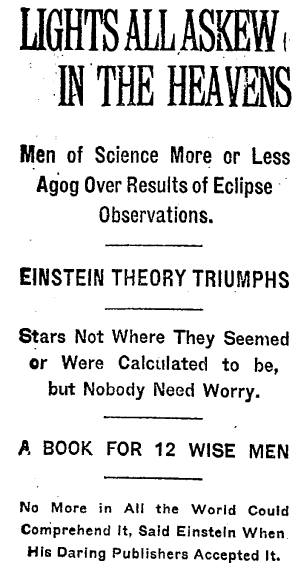1919 Eclipse
A total solar eclipse happens
every couple of years, but they are usually only visible from equatorial
regions. The solar eclipse of 29 May 1919 was fortuitously in front of a bright
constellation of stars and provided a perfect opportunity to experimentally
test Albert Einstein's new theory of gravity, first proposed in 1911.
Both Newton's old theory of gravity, and
Einstein's new one predicted that light does not necessarily travel in straight
lines, but can be deflected when it passes something as heavy as the sun.
However, Einstein predicted that it bent more: enough for the apparent
positions of stars behind the sun to detectably shift, compared to their known,
true positions.
From Oxford, Arthur Eddington carefully observed
the positions of the stars in January and February 1919. The eclipse would be
visible from both sides of the Atlantic so, to ensure against bad weather at
either site, Eddington despatched one team to Sobral, Brazil and went himself to
Principe. The skies cleared at both locations and, during the five minutes of
totality, both teams managed to take several clear photographs of the stars.
When Eddington returned home and compared the apparent positions of stars
behind the sun to their true positions, both sets of data confirmed that Einstein's theory was correct. The
discovery was reported in the academic journal Philosophical Transactions of the Royal
Scoiety and in the 22 November 1919 edition of the Illustrated London News (see below). In a world
torn apart by war, it was hailed as a ray of hope that "a new theory of the
universe, the brain-child of a German Jew working in Berlin, had been confirmed by an English Quaker on a
small African island" (J. P. McEnvoy).
Indeed, the phenomenon now known as gravitational lensing
is used as an everyday tool by astronomers, and the most promising probe of mysterious dark matter and dark energy.
This early demonstration of Einstein's theory is regarded as a highlight of 20th century science.

Taken from the 22 November 1919 edition of the Illustrated London News.

Coverage in the (more excitable) New York Times.